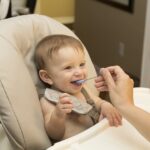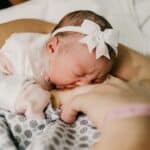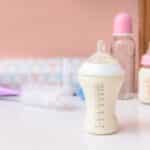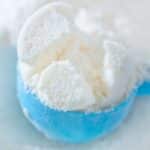As you’re preparing for your newborn baby, you’re going to eventually have to buy bottles. This is one of the most confusing parts of preparing for a newborn.
How many bottles do you need? What size should you buy? What kind should you buy? The entire thought process can be a bit stressful, but I’ll clear up quite a few things for you.
Most moms only need a few to start with, and you should only buy a few in the beginning anyway. This comprehensive guide will tell you everything you need to know about how many bottles you should buy!
Only Buy Five Four Ounce Bottles Before The Baby Is Born
Most newborn babies start off drinking two ounces at a time. It can be a bit much to mix up that tiny two ounces in a bottle that’s the same size as your little one. In the beginning, you only need four-ounce bottles.
It makes sense to stock up on bottles that you might need in the future but resist the urge. Babies have preferences. Your baby might refuse to drink out the bottle that you purchased and only drink out of a certain bottle.
Then, all the purchased bottles are a waste of your money. Granted, you can donate them or give them to a friend that is expecting, but you still have to spend double the money on bottles.
I’m a huge fan of Playtex bottles. When my daughter was pregnant, I picked up four-ounce bottles, eight-ounce bottles, nipples in every flow, and plenty of bottle liners. I made sure we were good to go. Then, he was born.
- Closer to natural breastfeeding - Designed to be most like mom, The Naturalatch silicone nipple encourages proper latching, promotes healthy feeding and allows you to easily switch between breast and bottle.
- Anti-colic feeding - Soft, disposable liner contracts while baby feeds to mimic breastfeeding. This prevents air from mixing with Milk and allows air-free FEEDING, reducing colic, gas and fussiness.
- Pre-sterilized for cleanliness - Pre-Sterilized Liners guarantee your bottle is clean and minimize clean-up time. They are also recyclable. (Does not include nipple and ring) (can be recycled at most grocery and mass retail store recycling bins)
Prices pulled from the Amazon Product Advertising API on:
Product prices and availability are accurate as of the date/time indicated and are subject to change. Any price and availability information displayed on [relevant Amazon Site(s), as applicable] at the time of purchase will apply to the purchase of this product.
Noah, my adorable grandson, was born early. In the NICU, they fed him with Dr. Brown’s bottles because he needed longer nipples. Once home, he refused to drink out of Playtex bottles.
I gave away all of the four-ounce bottles, slow flow nipples, and four-ounce liners. One bottle was used. The rest were brand new.
Now that he is nine months old, he doesn’t mind the Playtex bottles. (I tried them one last time before I was going to give them away.) So, the eight-ounce bottles won’t be handed off to someone else just yet.
However, that was a stroke of pure luck. In hindsight, I wish I would have waited to see which bottles he preferred. In addition to having feeding issues, some babies have gas, acid reflux, or other problems that call for a particular bottle.
If you don’t like feeling unprepared, set the money you will be spending on bottles aside. Once you know what brand and bottle your baby will be drinking out of, you can go buy the rest of your bottles, including eight-ounce bottles.
Consider Other Factors To Know How Many Bottles Do You Need
View in gallery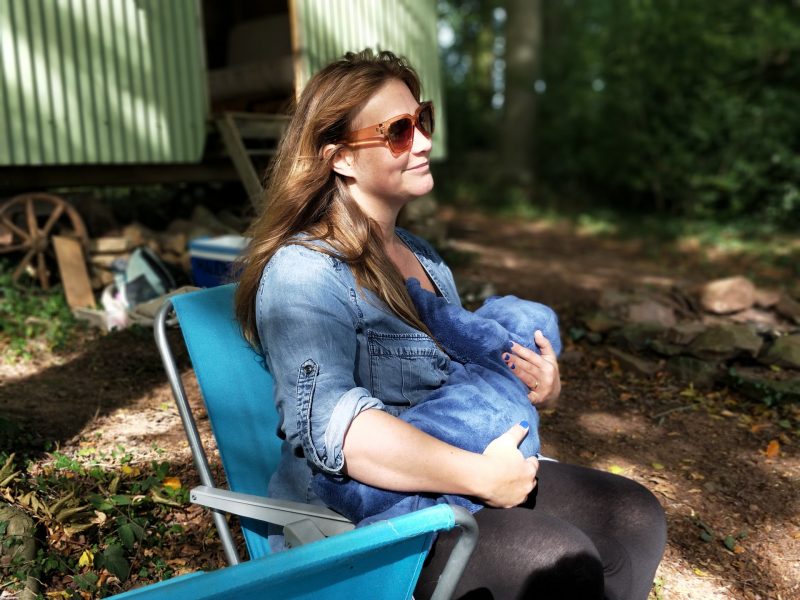
How many bottles do you need depends on several other factors?
It depends on whether you’ll be breastfeeding, pumping milk, sending your little one to daycare, and whether you mind washing bottles. Consider these other factors to make sure you have enough bottles.
Breastfeeding Moms Need Fewer Bottles In The Beginning
If you plan to breastfeed your baby, you won’t need more than 3 bottles. These bottles can make it easier to pump milk and feed your little one while you’re out. If you’re embarrassed to breastfeed in public, those few bottles are a necessity.
Moms that choose to formula feed will need more bottles. As you use them every two hours, you’ll quickly realize how often you have to wash bottles.
This can be a nightmare in the middle of the night if you don’t have enough clean bottles to get you through nighttime feedings.
If you plan to feed your little one formula, opt for 5 bottles in the beginning. This will get you through ten hours of feeding, assuming your baby eats every two hours.
Whether You Need More Bottles For Daycare Depends On The Daycare
Some daycares refuse to wash bottles. Instead, you’re required to send the number of bottles that your baby will need with them to daycare.
This is because the daycare teachers don’t have sinks in the room, don’t want to be responsible if a glass bottle breaks, or it might simply be their policy.
Not all daycares are like this, however. I used to work at a daycare. In the infant room, which is where children were when they were babies, we had a sink, bottles brushes, and drying racks.
Every bottle was washed. If we had a difficult time remembering which bottle went with which baby, we put a sticky note next to the drying bottle.
This means that you’ll need to decide on which daycare you prefer before stocking up on bottles. Make sure to ask the daycare how many bottles you are required to send. Then, if you need more, order a few more online. If you don’t, you’re already set!
The Type Of Bottle Matters Too
Most bottles are plastic or glass bottles that need to be washed. However, Playtex bottles with liners do not. This is one of the many reasons I love them.
The drop-in liner sits in the bottle. Because of this design, the bottle itself doesn’t need to be washed with every feeding. Instead, you can simply throw away the liner, pop in a clean nipple, and wash the nipple ring if you want to.
It doesn’t come in contact with the formula, so you don’t have to wash it every time you use it if you can’t for some reason.
This is why you need significantly fewer Playtex bottles than other brands. You can easily buy a few extra nipples to save yourself the cost of buying a lot of bottles.
How Much Do You Mind Washing Bottles?
How much you detest washing bottles does matter. I know that sounds a bit extreme, but I truly dislike washing bottles. My daughter doesn’t mind.
She could wash bottles five times a day, and be perfectly fine with it. Personally, I would rather wash them all once a day, and instead, just rinse them out after feeding.
If you do not like washing bottles and would prefer to wash them all or throw them all in the dishwasher once a day, you’ll need 14 bottles in the beginning.
(This is, once again, assuming your baby eats every two hours, and you’ll have a couple to spare.) If you have the time to wash them twice, you can cut that number in half.
How Many Bottles Do I Need In Eight Ounce Bottles?
View in gallery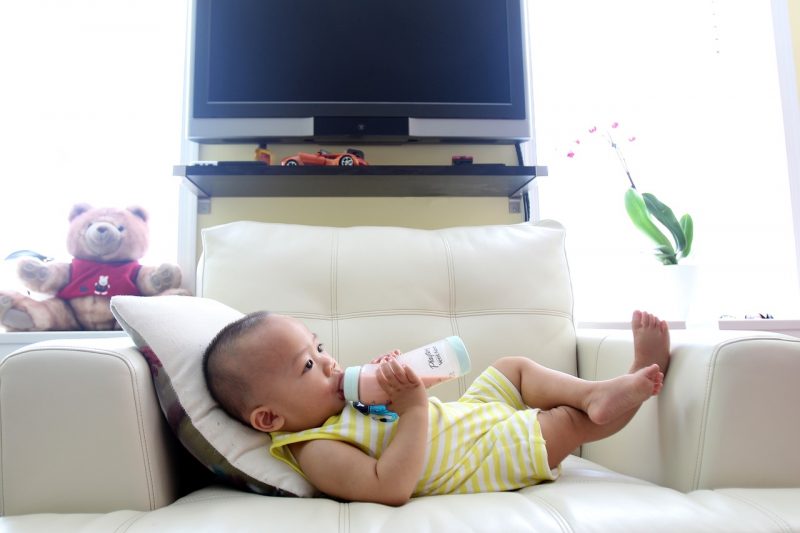
You can make it with four. By the time your baby upgrades to more than four ounces, they might be sleeping through the night (most smaller or average babies are).
Babies that eat more tend to eat fewer times a day, too. This means that you won’t use as many bottles. Start off with four. If you find that you need more, pick up a few extra bottles to accommodate your needs.
Remember to consider whether you’ll need more for daycare, the sitter, how often you’ll need to wash bottles, etc. when deciding whether you need more or less than four.
Materials Bottles Are Made From
Bottles are made from various materials. The most popular are glass and plastic, but there are other options available.
What type of bottle you prefer will determine how many you need of both four-ounce and eight-ounce. This will help you determine a budget for future bottles, too.
Plastic
Plastic bottles are the most affordable bottles on the market. You can easily find them in most dollar stores if you need an extra bottle and don’t get paid for a few more days.
They are easy to clean with a bottle brush, and most people don’t experience feeding issues with them. Some plastic bottles, like Dr. Brown’s bottles and Avent bottles, are made from plastic and are specifically designed to address feeding concerns like gas.
- Vent system eliminates negative pressure and air bubbles to help reduce colic, spit up, burping and gas
- Fully vented bottle design provides vacuum free feeding similar to breastfeeding
- Helps maintain vitamins C, A and E plus lipids
- BPA free. Dishwasher safe
- Includes 4 8 ounce bottles
Prices pulled from the Amazon Product Advertising API on:
Product prices and availability are accurate as of the date/time indicated and are subject to change. Any price and availability information displayed on [relevant Amazon Site(s), as applicable] at the time of purchase will apply to the purchase of this product.
On the other hand, plastic bottles are not the most environmentally friendly option. They contain more raw materials that push pollution into the air as plastic straws do.
They aren’t always BPA free, either. If this is a concern for you, opt for another type of bottle.
Glass
Glass bottles are one of the most popular options. The glass is not made from the same chemicals that plastic is, which makes them less harmful to the environment than plastic bottles are.
You don’t have to worry about the toxins that are in most plastic baby bottles. These don’t scratch easily, either, making them more durable as long as you’re the one handling them.
View in gallery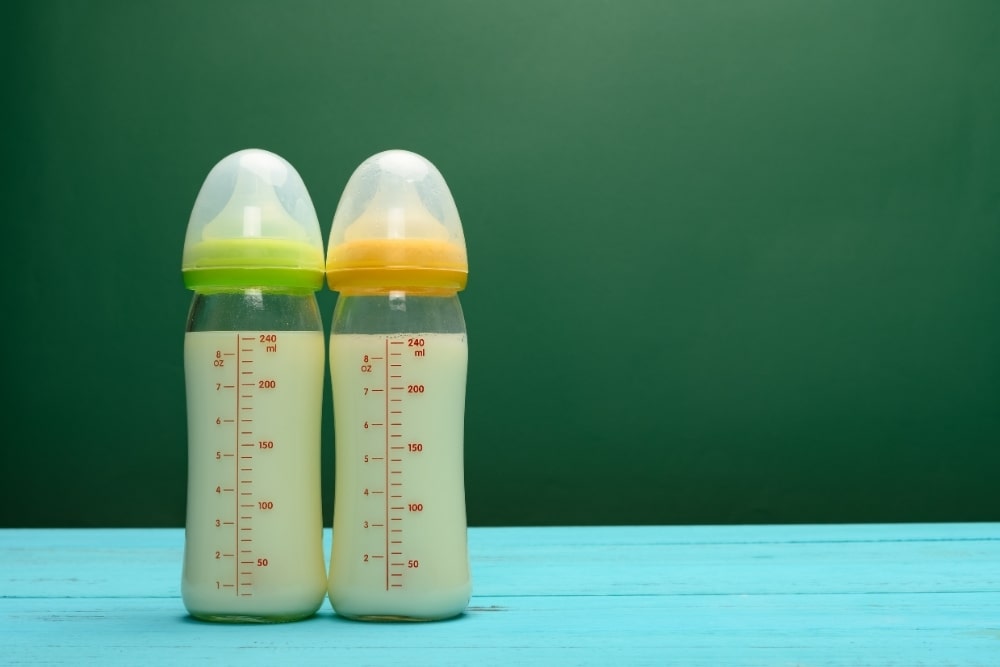
Older babies pose a danger to themselves and the bottle when it comes to holding the bottle.
Some babies throw bottles (the grandbaby does every time he’s done eating now), which would lead to a bottle breaking. This can get expensive, and it can be hazardous for babies if they break the bottle.
Stainless Steel
Stainless steel bottles are the most durable option, by far. They are easy to clean, won’t break and some of them can double as a thermos.
Your baby’s formula will stay warm longer in a stainless steel bottler than it will in other bottles. These also come with a little rubber on the sides so that they are comfortable for baby hands to grip.
The major downsides to these bottles are that they are more expensive than other versions, and they aren’t the most popular choice. One bottle can cost almost $20.
You’ll also need to keep in mind that accessories can be expensive as well. Not only are they expensive, but they also aren’t readily available at any store.
Some of the more popular bottles, like Dr. Brown’s bottles, have accessories everywhere. You find nipples at Kroger, extra vent systems at CVS, etc. You’ll have to order extra accessories for stainless steel bottles.
Other Options
While these are the most popular options, and the most readily available, they are not the only options you have. There are a few other types of bottles to consider when deciding what to feed your baby with.
Silicone bottles are an awesome option. These work like bottles with disposable liners, but you can wash the silicone part instead of it being a disposable liner.
Silicone bottles have a plastic exterior part that the silicone bag sits in to make it easy to hold. The silicone bag slowly deflates as the baby drinks the formula, making it harder to suck in air. This helps prevent gas in babies.
- Air-free FEEDING: innovative silicone pouch collapses as baby drinks, cuts down on the ingestion of air to decrease painful gas, colic and Burps
- No straws, vents or valves: other bottles require vents and valves that allow air back into the bottle
- Modeled AFTER moms: designed to mimic the natural form and feel of mom for baby feeding, easy to latch and encourages proper tongue positioning
Prices pulled from the Amazon Product Advertising API on:
Product prices and availability are accurate as of the date/time indicated and are subject to change. Any price and availability information displayed on [relevant Amazon Site(s), as applicable] at the time of purchase will apply to the purchase of this product.
Playtex bottles with drop-in liners work in a similar manner. The liner is not made of silicone, though.
Instead, it is a thin plastic liner that is thrown away. This is not as environmentally friendly as the silicone option, so it’s important to keep that in mind.
If You Use A Breast Pump, Choose Compatible Bottles
Breast pumps are usually designed to pump straight into a bottle. In this situation, it’s easier to choose bottles that are compatible with your breast pump. This instantly makes pumping breastmilk stress free.
Top Four Baby Bottles
When it comes to baby bottles, it can be helpful to have a few of the decorative ones in case you’re in a pinch.
View in gallery
Just like when my grandson refused the Playtex bottles and we discovered that Dr. Brown’s bottles can leak without the ventilation system, but it was after she threw away all of the vent systems because she thought that was why they were leaking.
Those cheap decorative bottles that come in gift baskets were a lifesaver. Keep that in mind even while you’re looking for the best of the best.
Playtex Angled Bottles With Drop-In Liners
These are not only a personal favorite, they are one of the highly recommended bottles. The drop-in liners can be pushed upwards to squeeze the air out of the bottle before giving it to your little one.
The bottle can be used as a straight bottle or bent to make it an angled bottle. Because the drop-in liners are disposable, it eliminates the tedious process of constantly having to wash bottles, too!
The initial cost of the bottles and one box of liners is relatively cheap. A nurser set gives you a couple of bottles of both four and eight ounces, as well as a few liners to get you started.
However, over time, the cost of liners usually makes these more expensive than other bottles. If your little one is colicky or has gas and other bottles aren’t helping, it’s worth it.
If you are opposed to disposable liners, keep in mind that these are now available with silicone, reusable liners.
- CLOSER TO NATURAL BREASTFEEDING - Designed to be most like mom, the Naturalatch silicone nipple encourages proper latching, promotes healthy feeding and allows you to easily switch between breast and bottle feeding.
- ANTI-COLIC FEEDING - Soft, disposable liner contracts while baby feeds to mimic breastfeeding. This prevents air from mixing with milk and allows air-free feeding, reducing colic, gas and fussiness.
- PRE-STERILIZED FOR CLEANLINESS - Pre-sterilized liners guarantee your bottle is clean* and minimize clean-up time. They are also recyclable**. (*Does not include nipple and ring) (**Can be recycled at most grocery and mass retail store recycling bins)
Prices pulled from the Amazon Product Advertising API on:
Product prices and availability are accurate as of the date/time indicated and are subject to change. Any price and availability information displayed on [relevant Amazon Site(s), as applicable] at the time of purchase will apply to the purchase of this product.
Dr. Brown’s Bottles
Dr. Brown’s bottles are highly recommended by pediatricians. They have a ventilation system that helps push air to the back of the bottle, which can help with babies that have gas.
The longer nipples can also help babies that have a poor sucking reflex eat. These bottles aren’t disposable, so you only have to pay the one-time cost of the bottles, aside from bottle accessories like a nipple with a faster flow.
Because these are so popular, you can usually find extra nipples and bottles at local stores, like your favorite grocery store or pharmacy.
The only downside I’ve found to these bottles is washing them. You need a tiny pipe cleaner styled brush to clean inside the ventilation system.
Most bottles come with these, but if you lose it it can be hard to find a replacement for just the tiny brush at local stores. Yet, you can order them online.
- Includes (3 ) 4 oz/120 ml Dr. Brown’s Options+ Bottles and (2) 8 oz/250 ml Dr. Brown’s Options+ Bottles clinically proven to reduce colic
- (5) Level 1 (0m+) Nipples and (2) Level 2 (3m+) Nipples
- (1) Soft Spout Transition Cup, 6m+ ; (1) Silicone Dishwasher Bag; (2) Storage Travel Caps
- (2) HappyPaci Silicone Pacifiers and (1) Bottle Brush
Prices pulled from the Amazon Product Advertising API on:
Product prices and availability are accurate as of the date/time indicated and are subject to change. Any price and availability information displayed on [relevant Amazon Site(s), as applicable] at the time of purchase will apply to the purchase of this product.
Philips Avent Natural Glass Bottles
These bottles are BPA free, made of sturdy glass, and are dishwasher safe. If you’re trying to find a glass bottle, consider the Philips Avent bottles.
They’re compatible with most other accessories, like Avent nipples, etc. Avent has a large line of products that are compatible with their bottles, like bottle warmers!
Complete gift sets can be purchased to make the cost of each bottle more budget-friendly.
The downside to these bottles is that they don’t come with the ventilation system that Avent anti-colic bottles have. They’re also a bit pricier than plastic bottles. However, those are about the only downsides specific to these glass bottles!
- Durable glass baby bottle set with multiple bottle and nipple sizes to grow with baby
- The most natural way to bottle feed; Wide, breast shaped, soft, flexible, silicone nipple promotes natural latch on, so its easy to combine with breastfeeding
- Advanced anti colic system is directly integrated into the nipple with no extra hard to clean parts
Prices pulled from the Amazon Product Advertising API on:
Product prices and availability are accurate as of the date/time indicated and are subject to change. Any price and availability information displayed on [relevant Amazon Site(s), as applicable] at the time of purchase will apply to the purchase of this product.
PURA Drinkware Is The Best Stainless Steel Bottle
Personally, I’ve never used a stainless steel bottle, but I do think these are a great alternative to glass bottles.
Stainless steel is much more durable than glass, and they’ll warm up faster because of the stainless steel. These also don’t contain the chemicals that most people are concerned about regarding plastic bottles.
The main downsides to stainless steel bottles are that you can’t put them in the microwave, but you’re not supposed to microwave baby bottles anyway.
Second, most of them don’t seem to come with a measuring line to help you measure water. You’ll have to do that separately. Last, these are not a popular option.
While it’s always okay to go outside of the box, you’ll have to order extra parts in advance or have a few spare bottles while you wait on spare parts to be delivered.
However, owning a stainless steel bottle, or a few, definitely couldn’t hurt. If I was trying to avoid plastic, I would consider these for older babies that are more likely to break glass bottles.
- Included pink & aqua silicone sleeves provide additional grip and a soft feel for little hands
- Bottles feature internal volume marks to make life easier
- Includes two (2) slow-flow and two (2) medium-flow nipples with anti-colic vent tube, two (2) fast-flowing silicone XL spouts, two (2) no-spill sealing disks, two (2) travel covers and two (2) sleeves all crafted of medical grade silicone
- Dishwasher Safe, food grade #304 (18/8) stainless steel and medical grade silicone contains no BPA, BPS, EA, PVC, phthalates, or other toxins and no internal lining to ensure nothing ever leaches into your beverage
Prices pulled from the Amazon Product Advertising API on:
Product prices and availability are accurate as of the date/time indicated and are subject to change. Any price and availability information displayed on [relevant Amazon Site(s), as applicable] at the time of purchase will apply to the purchase of this product.
Don’t Forget Bottle Accessories!
If you’re wondering how many bottles do you need for a newborn, it’s important to consider bottle accessories as well. Some are necessary, some are simply more convenient, and others are just nice to have.
Consider what you’ll need for your baby before they get here to make life a little bit easier when you’re going without sleep.
Buy Extra Bottle Accessories And Nipples
Regardless of which type of bottle you choose for your baby, it’s important to buy a few extra accessories. Extra bottle nipples are a must-have. Over time, they wear out.
The more you sterilize bottle nipples, the faster they wear out. Some bottles also come with nipples that are too fast for your little one! Pick up a few slow flow nipples so that you have them just in case.
Don’t forget to consider:
- Extra silicone bags for silicone bottles
- Extra bottle liners if you’re using bottles with disposable liners
- Nipples in a faster flow
- An extra bottle ring or two
View in gallery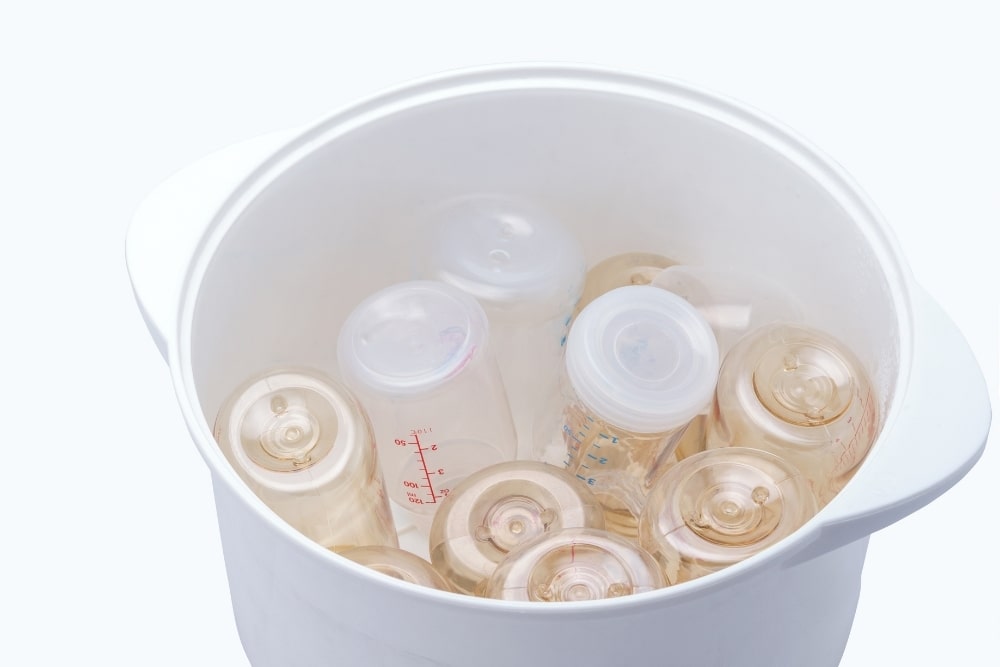
A Bottle Sterilizer Is More Convenient
You can sterilize bottles, nipples, and anything else by placing them in boiling water. However, this doesn’t compare to the convenience that a bottle sterilizer offers.
You simply put everything inside of it, and then push a button. Whether you’ll wish you had one depends on how much time you have on your hands. If you’re working full time, a single mom, and have other children, just pick one up now.
Baby Bottle Brush
A baby bottle brush is specifically designed to reach inside of the baby’s bottle. These can also make scrubbing nipples go a bit quicker.
- Combination sponge and bristles for thorough cleaning
- Grooved no-slip handle for easy grip
- Chevron channels at base for cleaning nipples
- Storage clip to house brush near sin
Prices pulled from the Amazon Product Advertising API on:
Product prices and availability are accurate as of the date/time indicated and are subject to change. Any price and availability information displayed on [relevant Amazon Site(s), as applicable] at the time of purchase will apply to the purchase of this product.
They’re pretty cheap, but you can pick up a cheap dish soap brush designed for scrubbing cups to do the same job. It doesn’t matter which one you choose.
The primary difference is that some bottle brushes also include a nipple brush. This can make it easier to scrub the inside of baby nipples.
On the other hand, you can also turn them inside out and scrub them as you would any other dish. Either way, you still need to pick up something to wash your little one’s bottles with.
Bottle Drying Rack
These are not a necessity. You can put your baby bottles upside down on a towel to dry or use the little plastic parts inside a dish drainer for them.
There are some pretty cute ones on the market though! If you plan on washing a lot of bottles at once, it can be helpful to have them separate so that you have room for the rest of the dishes.
Bottle Warmers Are The Quickest Method
Bottle warmers are the quickest, and easiest, a method to warm up a baby bottle. You simply put the bottle in the warmer, let it warm up to the appropriate temperature, and then test it on your wrist.
Portable baby bottle warmers are another awesome invention and a must-have for road trips! If you’re going to have a baby, at least consider picking up a bottle warmer. Trust me, it’s quicker than using warm water or boiling on the stove.
- Warms bottles quickly and evenly while in the car
- Easy to use adapter includes a light up timer display with lights for use at night
- Flexible heating band conforms to bottle
- 1 year limited warranty
- Clean before use. Wipe with damp cloth if nee
Prices pulled from the Amazon Product Advertising API on:
Product prices and availability are accurate as of the date/time indicated and are subject to change. Any price and availability information displayed on [relevant Amazon Site(s), as applicable] at the time of purchase will apply to the purchase of this product.
In Conclusion
Picking up a few bottles before the baby is born is a great idea, but don’t buy too many. Instead, stick with 3-4 four-ounce bottles until you’re certain that your baby likes that type of bottle.
Then, buy more if you need them. When babies get older, they’ll need about four eight-ounce baby bottles. Remember, you can always buy more if you need them!
